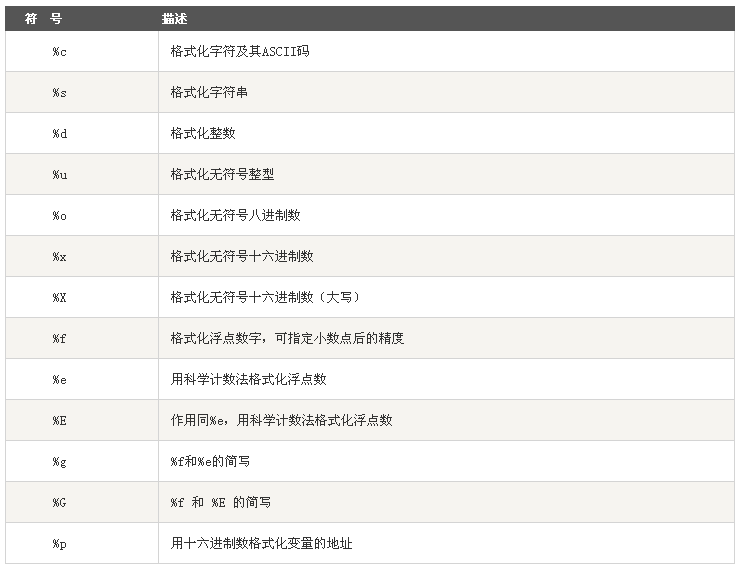1.常见操作1-查找
string.find(str, beg=0, end=len(string))检测 str 是否包含在 string 中,如果 beg 和 end 指定范围,则检查是否包含在指定范围内,如果是返回开始的索引值,否则返回-1
a="adsdfnjd" b=a.find("s") print(b)
string.rfind(str, beg=0, end=len(string))类似于 find()函数,不过是从右边开始查找.
a="adsdfnjd" b=a.rfind("f") print(b)
string.index(str, beg=0, end=len(string))类似于 find()函数,但是找不到报异常.
a="adsdfnjd" b=a.index("q") print(b)
string.rindex(str, beg=0, end=len(string))类似于 rfind()函数,但是找不到报异常.
a="adsdfnjd" b=a.rindex("f") print(b)
2.常见操作2-统计
string.count(str, beg=0, end=len(string))检测 str 是否包含在 string 中出现的次数,如果 beg 和 end 指定范围,则检查是否包含在指定范围内
a="adsdsadasdffnjd" b=a.count("s") print(b)
3.常见操作3-分隔
string.split(str="", num=string.count(str))
以 str 为分隔符切片 string,如果 num有指定值,则仅分隔 num 个子字符串
a="adsdsadasdffnjd" b=a.split("s") print(b)
string.splitlines([keepends])
按照行(' ', ' ', ')分隔,返回一个包含各行作为元素的列表,如果参数 keepends 为 False,不包含换行符,如果为 True,则保留换行符。
a="adsd fssas anjd" b=a.splitlines(keepends=False) print(b)
string.partition(str)有点像 find()和 split()的结合体,从 str 出现的第一个位置起,把 字 符 串 string 分 成 一 个 3 元 素 的 元 组 (string_pre_str,str,string_post_str),如果 string 中不包含str 则 string_pre_str == string.
a="adsdfssasanjd" b=a.partition("f") print(b)
string.rpartition(str)
类似于 partition()函数,不过是从右边开始.
a="adsdfssafsanjd" b=a.rpartition("f") print(b)
4.常见操作4-判断
string.startswith(obj, beg=0,end=len(string))
检查字符串是否是以 obj 开头,是则返回 True,否则返回 False。如果beg 和 end 指定值,则在指定范围内检查.
a="adsdfssafsanjd" b=a.startswith("f") print(b)
string.endswith(obj, beg=0,end=len(string))
检查字符串是否是以 obj 结尾,是则返回 True,否则返回 False。如果beg 和 end 指定值,则在指定范围内检查.
a="adsdfssafsanjd" b=a.endswith("f") print(b)
string.isalnum() 所有字符都是字母或数字则返回 True,否则返回 False
a="adsdfssafsanjd" b=a.isalnum() print(b)
string.isalpha() 所有字符都是字母则返回 True,否则返回 False
a="adsdfs+-/anjd" b=a.isalpha() print(b)
string.isdigit() 所有字符都是数字则返回 True,否则返回 False
a="adsdfs+-/anjd" b=a.isdigit() print(b)
string.isupper() 所有字符都是大写则返回 True,否则返回 False
a="adsdfs+-/anjd" b=a.isupper() print(b)
string.islower() 所有字符都是小写则返回 True,否则返回 False
a="adsdfs+-/anjd" b=a.islower() print(b)
string.isspace() 只包含空格则返回 True,否则返回 False
a="adsdfs+-/anjd" b=a.isspace() print(b)
5.常见操作5-大小写
string.capitalize() 把字符串的第一个字符大写
a="adsdfsanjd" b=a.capitalize() print(b)
string.upper() 转换 string 中的小写字母为大写
a="adsdfsanjd" b=a.upper() print(b)
string.lower() 转换 string 中的大写字母为小写
a="adsdfsanjd" b=a.lower() print(b)
6.常见操作6-对齐
string.ljust(width) 返回一个原字符串左对齐,并使用空格填充至长度 width 的新字符串
a="adsdfsanjd" b=a.ljust(20) print(“%ssss”%b)
string.rjust(width) 返回一个原字符串右对齐,并使用空格填充至长度 width 的新字符串
a="adsdfsanjd" b=a.rjust(20) print(“%ssss”%b)
string.center(width) 返回一个原字符串居中,并使用空格填充至长度 width 的新字符串
a="adsdfsanjd" b=a.center(20) print(“%ssss”%b)
7.常见操作7-裁剪
string.strip([obj]) 删除 string 字符串前后的的obj,如果不传参数,删除前后空格
a="adsdfsanjda " b=a.strip(“a”) print(b)
string.lstrip([obj]) 删除 string 字符串左面的obj,如果不传参数,删除左面空格
a="adsdfsanjda" b=a.lstrip(“s”) print(b)
string.rstrip([obj]) 删除 string 字符串右面的obj,如果不传参数,删除右面空格
a="adsdfsanjda" b=a.rstrip(“s”) print(b)
8. 常见操作8-合并
string.join(seq) 以 string 作为分隔符,将 seq 中所有的元素(的字符串表示)合并为一个新的字符串
a="adsdfsanjda" c=”12555” b=a.join(c) print(b)
9.常见操作9-编码解码
string.encode(encoding='UTF-8', errors='strict')
以 encoding 指定的编码格式编码 string,如果出错默认报一个ValueError 的异常,除非 errors 指定的是'ignore'或者'replace'
bytes.decode(encoding='UTF-8', errors='strict')
a='我' b=a.encode("UTF-8") print(b)
以 encoding 指定的编码格式解码 string,如果出错默认报一个 ValueError 的 异 常 , 除 非 errors 指 定 的 是 'ignore' 或 者'replace'
a=b'xe6x88x91' b=a.decode("UTF-8") print(b)
注意:本篇文章是个人总结,仅供参考。若出现其他问题,与写者无关,切勿用于商业获取福利!
如果总结有勿,或者交流与学习,请与写着联系!qq:1349176744


